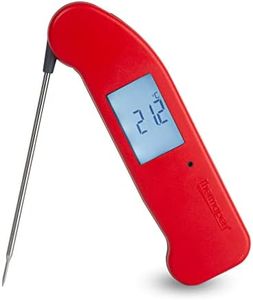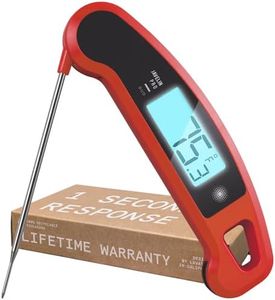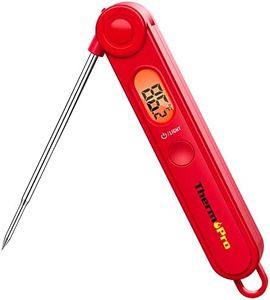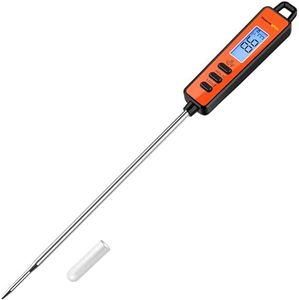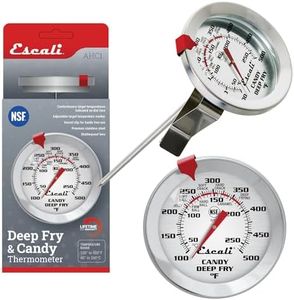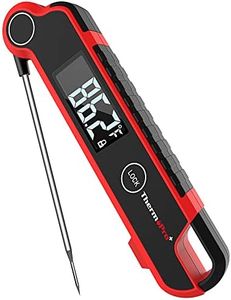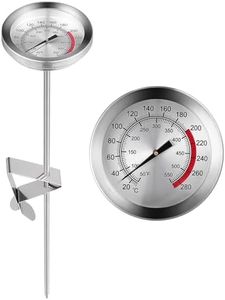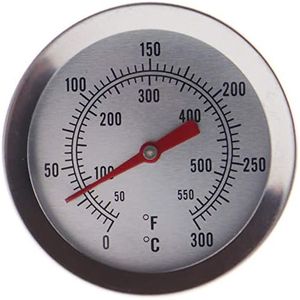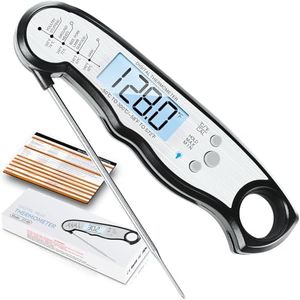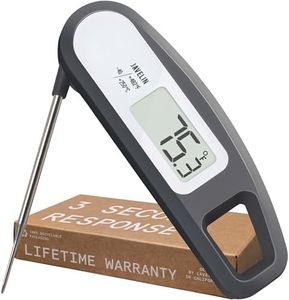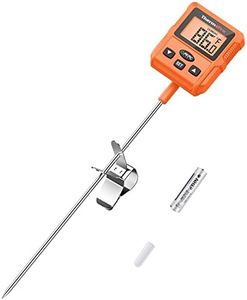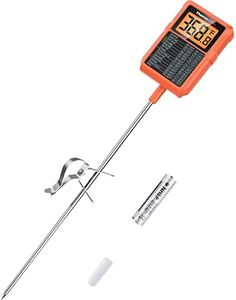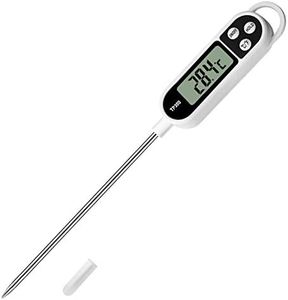We Use CookiesWe use cookies to enhance the security, performance,
functionality and for analytical and promotional activities. By continuing to browse this site you
are agreeing to our privacy policy
10 Best Deep Fry Thermometers
From leading brands and best sellers available on the web.Buying Guide for the Best Deep Fry Thermometers
Choosing the right deep-fry thermometer is important for achieving perfectly cooked, safe, and tasty fried foods. A thermometer helps you maintain precise oil temperatures, which can make a big difference in texture and flavor. When shopping for a deep-fry thermometer, understanding the different features and specifications will help you find a product that matches your cooking style and needs. Below are some of the main aspects to consider and how you can judge which options will suit you best.Temperature RangeTemperature range refers to the span of temperatures a thermometer can measure. This is important because frying typically requires oil temperatures between 325°F and 400°F, but being able to monitor slightly lower or higher temperatures can also be useful for other recipes. Some thermometers cover a limited range, while others have a broader span. If you only fry foods, a thermometer that covers 300°F to 400°F may be enough, but for extra flexibility, such as making candy or other kitchen tasks, look for one that goes lower and higher.
Type of Display (Analog vs Digital)The display type refers to how the thermometer shows the temperature reading. Analog thermometers use a dial and pointer, while digital ones have an electronic display. Analog models are simple, do not require batteries, and are often more durable for deep-frying, but they can be harder to read quickly. Digital thermometers offer faster, more precise readings and are very easy to read, though they need batteries and sometimes aren't as heat-resistant. If you prefer quick, exact readings, digital is a good choice; if you value simplicity and reliability, consider analog.
Probe LengthProbe length is the length of the metal stem that measures the temperature. Longer probes keep your hands further from hot oil, making them safer for deep pots, but very long probes can be awkward with shallow pans. If you usually fry in deep pots or large batches, choose a longer probe; for shallow pans or small fryers, a shorter one can be more convenient.
Clip or AttachmentThis spec refers to whether the thermometer can attach to the side of your pot. A built-in clip lets you secure the thermometer so it stays in the oil and keeps your hands free, reducing mess and risk. Some thermometers come with sturdy, adjustable clips, while others must be handheld. If you want hands-off use or plan to monitor temperature over long periods, a pot clip is a valuable feature.
Ease of CleaningCleaning ability is about how simple it is to wash the thermometer after use. Oil can be messy, so some thermometers are dishwasher-safe, while others need gentle hand washing to avoid damage. Consider how much maintenance you want—if easy cleanup is important, look for thermometers that can be safely washed without much fuss.
Speed of ReadingThis is how quickly a thermometer provides an accurate temperature reading once inserted in the oil. Faster readings mean you can react quickly if the oil is getting too hot or cooling down, which is important for cooking crispy, delicious food. Instant or quick-read thermometers give results in a few seconds, while others might take more time. If you want the most control over your frying, a quicker reading can help; otherwise, a slower thermometer may be fine for more relaxed cooking.
Temperature AccuracyAccuracy is about how closely the thermometer measures the real temperature. Having an accurate reading is crucial for safety and recipe success, as even a few degrees can change results. Most thermometers have a margin of error, and some allow for calibration to ensure ongoing precision. If you need perfect results, such as for candy making or delicate frying, prioritize high accuracy and look for models that let you calibrate or check accuracy regularly.
